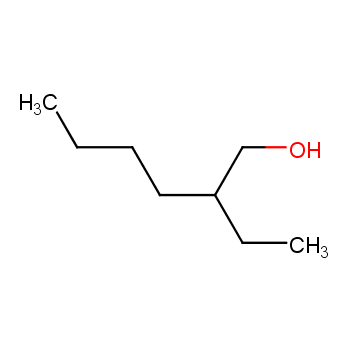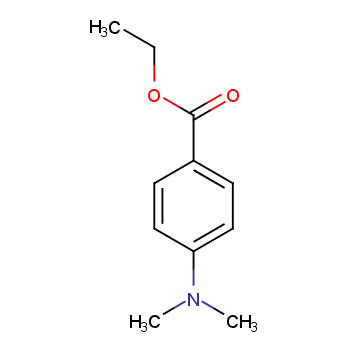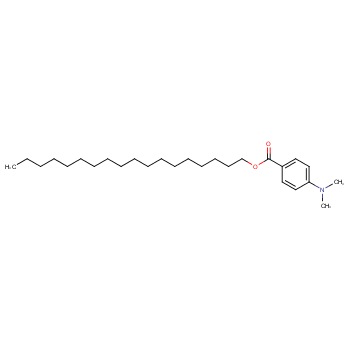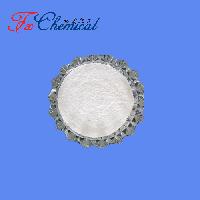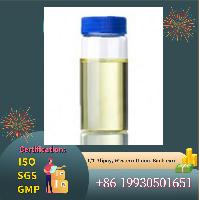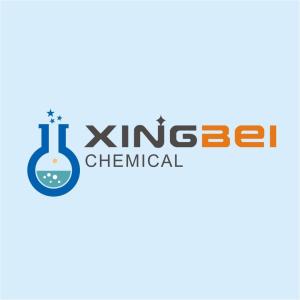The IUPAC name of this product is?2-ethylhexyl 4-(dimethylamino)benzoate. With the CAS registry number 21245-02-3, it is also named as?Octyl dimethyl p-aminobenzoate; Padimate O;?Arlatone UVB; Benzoic acid, 4-(dimethylamino)-, 2-ethylhexyl ester; Escalol 507; Eusolex 6007; HSDB 7169; UNII-Z11006CMUZ;?4-(Dimethylamino)benzoic acid, 2-ethylhexyl ester.?The product's categories are?photo initiators, aromatic esters, amine photochemical coinitiators, polymer science and polymerization initiators.
The 2-Ethylhexyl 4-dimethylaminobenzoate is?clear to slightly yellow liquid?which is a highly effective amine complexing agent mainly used in cosmetics.?Because it can absorb ultraviolet rays, thereby preventing direct DNA damage by UV-B.?And many research?suggested that?this product is?photocarcinogenic. It is also used in the UV curable coatings and inks.
The 2-Ethylhexyl 4-dimethylaminobenzoate is?irritating to eyes, respiratory system and skin.?In case of contact with eyes, rinse immediately with plenty of water and seek medical advice.?Take off immediately all contaminated clothing.?If you want to contact this product, you must wear suitable protective clothing.
The other characteristics of this product can be summarized as:?(1)ACD/LogP: 6.15 ; (2)# of Rule of 5 Violations: 1 ; (3)ACD/LogD (pH 5.5): 6.15 ; (4)ACD/LogD (pH 7.4): 6.15 ; (5)ACD/BCF (pH 5.5): 27706.53 ; (6)ACD/BCF (pH 7.4): 27727.53 ; (7)ACD/KOC (pH 5.5): 52661.16 ; (8)ACD/KOC (pH 7.4): 52701.07 ; (9)#H bond acceptors: 3 ; (10)#H bond donors: 0 ; (11)#Freely Rotating Bonds: 9 ; (12)Index of Refraction: 1.514 ; (13)Molar Refractivity: 84.72 cm3 ; (14)Molar Volume: 281.2 cm3 ; (15)Polarizability: 33.58 10-24cm3 ; (16)Surface Tension: 36.2 dyne/cm ; (17)Enthalpy of Vaporization: 63.14 kJ/mol ; (18)Vapour Pressure: 4.57E-06 mmHg at 25°C ; (19)Rotatable Bond Count: 9 ; (20)Exact Mass: 277.204179 ; (21)MonoIsotopic Mass: 277.204179 ; (22)Topological Polar Surface Area: 29.5 ; (23)Heavy Atom Count: 20.
People can use the following data to convert to the molecule structure.?SMILES: O=C(OCC(CC)CCCC)c1ccc(N(C)C)cc1;?InChI: InChI=1/C17H27NO2/c1-5-7-8-14(6-2)13-20-17(19)15-9-11-16(12-10-15)18(3)4/h9-12,14H,5-8,13H2,1-4H3; InChIKey: WYWZRNAHINYAEF-UHFFFAOYAL.?2-Ethylhexyl 4-dimethylaminobenzoate has many suppliers, such as?Changzhou Sunlight Pharmaceutical Co., Ltd., Insight Finechem Co., Ltd. and Zhejiang Shou & Fu Chemical Co., Ltd..
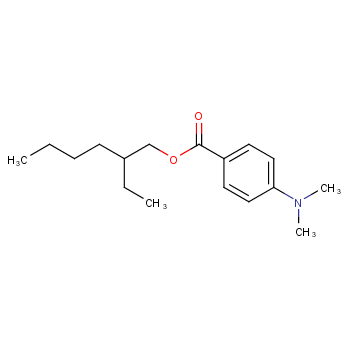
 EN
EN







